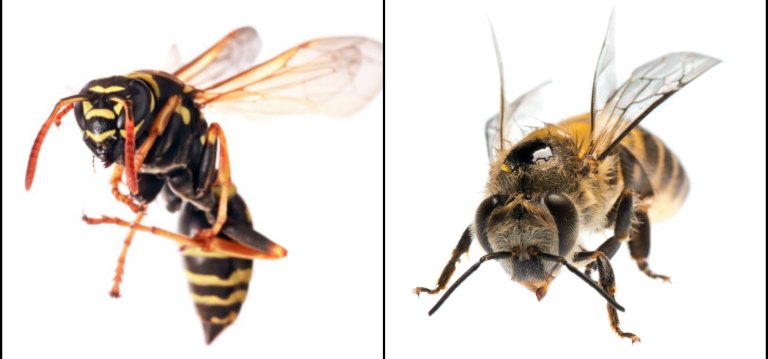In the late summer and early Fall months both honey bee and wasp populations are at a peak and starting to be reduced. At the same time nectar sources are reduced. Consequently, yellow jackets and honey bees compete for resources. Yellow jackets rob resources from bee colonies and are even known to predate adult bees. During dryer and hotter summers when there is an even bigger shortage of resources there is even more competition. This can result in sustained predatory pressure and can be very problematic for weak bee colonies.
Yellow jacket populations sizes relate closely to weather patterns. If spring is warm and dry yellow jacket wasp queens will be successful and produce many offspring that will grow in strong populations in late summer.
If yellow jacket pressure is high and negatively impacting a honey bee colony then wasp control methods should be undertaken to prevent an increase in yellow jacket wasp populations. Any attempt to reduce yellow jacket populations should be welcomed. Such wasp removal methods can include trapping yellow jackets or using insecticides to kill or suppress a colony. When faced with a wasp problem it is best to work with a licensed exterminator who has the training to not only kill a wasp colony but also to prevent any negative impacts on a beneficial bee colony that can be near by.
Locating and Exterminating Wasp Colonies
We work closely with professional wasp exterminators for a variety of reasons. First reason is safety, as yellow jacket stings can be painful. Second reason is the licensing required to apply insecticides in Ontario. We work closely with wasp nest removal specialists – exterminators. Their professional approach guarantees that not only a wasp nest is destroyed but also done in a way that will not impact bee colonies near by.
Yellow Jacket Wasps Vs Bees
The difference between a wasp vs. bee is very important to know and will help you decide what role that insect plays in your environment and whether or not you are at risk for a bee sting. Although both wasps and bees share many similarities, there are actually several key differences. At the end of the article I have included my top four reasons that a wasp sting is different from a bee sting.
First, the appearance of the insect itself. Wasps and Bees are closely associated, so when you see a wasp on your arm or on your body, it may seem very similar to a bee. But there are several obvious differences, such as the size of the insects and their color patterns. A wasp, for example, has a long tail that can be anywhere from six to nine inches long. A bee has no long tail and its abdomen is very small – only three to four inches long.
Another important difference is how the insects feed. Bees fly out of the flowers they feed from and sting at the insects they are unable to reach. Wasps, on the other hand, eat mostly plants and can be found anywhere there are flowers. They are more likely to sting out at an animal or person, as opposed to flowers and fruits. So next time you are stung by a wasp, try comparing the appearance of the insect to a bee and you will find out that it is a completely different creature.
